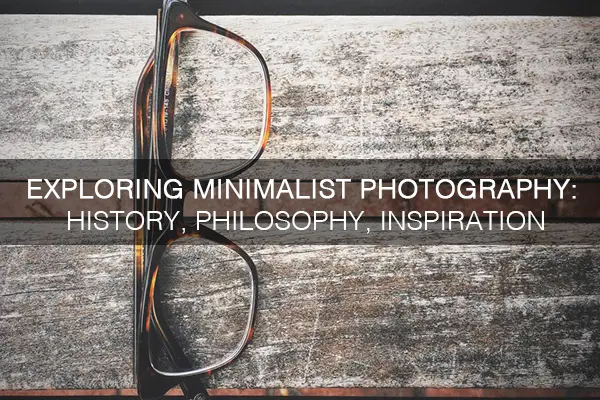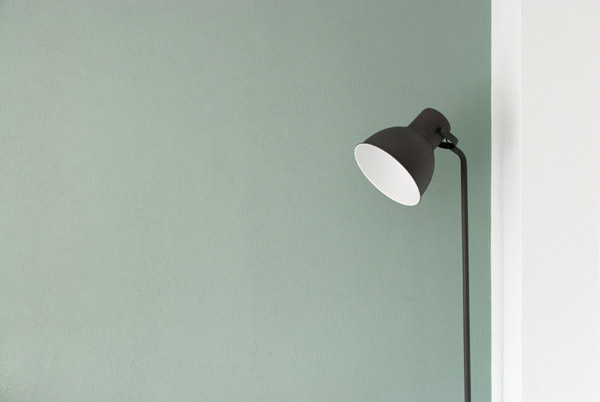Minimalism as an artistic philosophy is difficult to precisely define. There are certain elements that are largely agreed upon, the foremost being that minimalism is all about simplicity.

Different photographers may have varying definitions of simple. If you were to give 10 photographers the same subject and ask them to shoot it within their own idea if minimalism, you’d likely get 10 completely different photos back.
To some, minimalism means focusing on shapes, while other artists might focus on repeating patterns. And while many people think of stark images with a lot of negative space, others might fill the camera’s entire frame. And while this lack of specific, defining terms may seem confusing, it opens the door for great photography.
The Philosophy of Minimalist Photography
Photographer Steve Johnson keeps a blog dedicated to minimalist photography. According to him, this area of photography is all about finding your subject’s true nature. He wrote:
Minimalist photography is not simply about taking a photograph of less. Minimalism is about getting to the essence of something. By definition, it is a reductive process—a process that starts from a non-minimalist position then, through the stripping away of what is not important, gets to what is important.
So what we can take away from Johnson’s words is that minimalist photography isn’t just about simple shapes and colors, but about trying to capture an emotion or an idea in its purist form. Of course, like I mentioned earlier, many artists will disagree with this notion, and they’re not necessarily wrong.
History
The history of minimalism as an artistic movement began in New York in the 1960s. It was a movement started by artists who felt the need to move away from the abstract expressionism that had become popular just after World War II. Painters, such as Robert Ryman, Frank Stella and Kenneth Noland began producing works of art meant to explore what is necessary to convey one’s intent when creating art.

Many painters moved on from canvas to become sculptors. From there, the minimalism movement really began to take off. This philosophy has since evolved beyond its roots to become an approach that many artists, including writers, actors, filmmakers, and of course, photographers, have come to employ and mix with other artistic philosophies.
Finding Ideas and Inspiration
The phrase encountered most often when reading about minimalist photography is “Less is more.” While this may be an oversimplification that shouldn’t necessarily be followed blindly, it is a good place to start. Looking back over the work of famous minimalist artists could also help get the creative cogs turning in your brain.
Try using negative space to offset your subject. Look for aberrations in otherwise plain patterns. Then try filling your frame completely, but with only one simple item. We have a great list of practical tips to help get you started with minimalist photography you can check out, too.
The Beauty of Limiting Options
There’s something to be said in favor of setting restrictive limits on yourself in order to find new ways of doing things. The idea is that numerous creative options can sometimes overwhelm us. And sometimes, too many options means plenty of easy options that don’t ask much of you creatively. By removing most of your artistic choices, you force yourself to come up with new solutions or approaches that you otherwise might never have thought of.
How does that work with minimalist photography, though? You might limit yourself to one simple subject shot against a high-contrast monochrome background. Take a knick-knack or some other random item and shoot it on against a smooth, simple surface in your home, like your bed sheets. Now see how much inspiration you can pull from it. Shoot from every conceivable angle. Play with the item’s geometry. Point a lamp at it (I keep a high-watt daylight-balanced light bulb in a regular desk lamp just for this) from different angles to see if something jumps out at you.
Or you might decide to go for a walk with your camera, only allowing yourself to take photos of patterns repeated throughout public space. If the compulsive part of you cringes at the thought of forbidding yourself from taking photos at the risk of missing a truly great moment, you’re on the right track. Tacking a personal cost or sacrifice to your work can help you really focus when you find something that falls within your prescribed terms.
Adding Minimalism To Your Photographic Repertoire
At the end of the day, don’t feel obliged to constrain yourself to these or any other set of rules when it comes to your approach to photography. You’re free to cherry-pick elements of minimalism that you like and leave the rest behind. Or using a minimalistic approach can help you strip away elements that might be holding you back or working as a mental block. If you’re stuck in an artistic or creative rut, maybe trying something new like minimalism will help get you back on track.
Understanding the ideas and philosophy behind minimalism, along with some technical prowess you can easily develop with some practice can come in handy if you’re interested in commercial product photography. And the studio equipment needed for doing commercial work is easy to build on your own, if you’re crafty. Instructions for how to do this are everywhere on the Internet.









Excellent minimalist Photography !!! Glad to see your post.